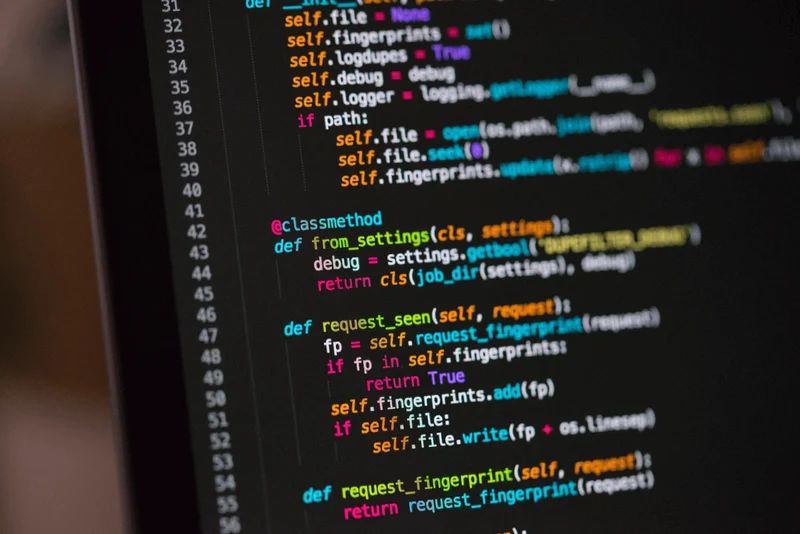Pros and Cons of Python Development
Python is a simple, versatile, and powerful programming language. Popular amongst students and beginners, it also delivers a vast amount of value to professional developers and experienced engineers. The relative pros and cons of python development make it worthy of consideration as both a general-purpose tool and a language for specific and specialised production assets.
Ranking as one of the most popular languages amongst developers, Python excels as a language to solve the many problems that come from application development. From machine learning, data analysis, and language processing to CI/CD and workflows—Python is a language with very diverse capabilities.
Looking to tap into some of Python’s many applications? Just tell us what you need and within 72h we can connect you with up to 5 companies with Python capability—all for free!
Simple, Intuitive, Easy to Learn
The syntax of Python is natural and intuitive. More often than not, ways of doing common tasks are done in exactly the way that you’d expect them to be. By design, this makes code easier to read and understand—even without a deep background in the language.
Simple syntax is easier to learn, meaning there’s a continuous pipeline of engineers and developers gaining a solid understanding of the language and practical experience in using it to solve problems. And if you need to test a developer's understanding and experience, our guide to Hiring Python Developers will tell you everything you need to know.
Improved Productivity
The simplicity of Python also makes it an exceptionally productive language. Fewer lines of code achieve more in Python than they do in most other languages, most notably C++ or Java.
From the perspective of a developer, fewer lines of code means less debugging, less testing, and less maintenance. Simplicity most often comes with reliability.
With lower overheads and less time spent on syntax and research, there’s more time and attention to focus on the big picture topics that really matter.
Interpreted Language
Python is one of a handful of modern interpreted languages. These include JavaScript, Ruby, and PHP.
An interpreted language, in comparison to a compiled one, executes code line by line instead of building a complete solution ahead of run time. One result of this is that the interpreter stops when it encounters an error, meaning developers can see precisely where the program has got caught and potentially resolve the issue.
The process of debugging an interpreted language is often more straightforward than a compiled one. This is particularly true where multiple errors can be dealt with one at a time.
Dynamically Typed
Another feature of Python not universally used amongst programming languages is the dynamic typing system. In simple terms, this means the system doesn’t know the type of a variable before executing the code.
From a developer’s perspective, a dynamically typed language shares some superficial similarities with a loosely typed one. Both release some of the syntax burden away from the developer at the time of writing.
Dynamic typing allows the interpreter to assign types as code is interpreted, however, making the language effectively strongly typed when it matters—at run time.
Vast Libraries
Within the Python ecosystem is a large number of support libraries to assist with machine learning, data analysis, data visualisation, natural language processing, and web development amongst others.
These libraries and platforms are exceptionally well supported and maintained by a strong community of open-source developers. Many of them make up some of the most popular and active projects on GitHub today.
For additional library support, Python comes with its own package manager—pip. Pip makes importing, updating, and maintaining these libraries for various projects almost trivial. Read our Ultimate Guide to Python Frameworks in 2021 to learn even more about the various capabilities of Python.

Portability
While most languages require changes to code to switch between supporting Windows, macOS, and Linux, Python is a truly portable language in that a single codebase can be used anywhere that can run the interpreter.
Care should be taken, however, that system-dependent features don’t interrupt this write once, run anywhere philosophy. To be sure, make sure you have the right Python experts on your team! Just tell us what you need and we can do the work for you by connecting you with up to 5 development companies within 72h that match your needs—all for free!
Drawbacks of Python Development
Performance: Speed
While the languages’ interpreted nature and dynamic typing features deliver strong advantages, they also bring some drawbacks. Both have an impact on the speed Python code is capable of running.
Far from adding entire seconds onto code execution, it may add a millisecond or two here or there. The impacts aren’t huge, but they can add up when outright performance is a mission-critical part of your deployed application.
Performance: Space
The simplicity of Python also comes with trade-offs behind the scenes. Python programs are memory intensive, particularly in comparison to other modern programming languages.
In limited devices or embedded computing, this can be a significant trade-off where the advantages of Python are outweighed by its drawbacks.
Performance issues prohibit Python from playing a large role in mobile computing, for example.
Dynamically Typed
Similarly listed as one of the language’s strongest assets, dynamic typing is also one of its major drawbacks.
Verification, on dynamically typed languages, is that bit more difficult. While they’re not as tricky to debug as loosely typed languages, they do require additional testing and more rigorous methods to ensure comparable reliability with strongly typed ones.
Breaking Changes
Python is a rapidly evolving language. In recent months and years, changes being made have created a modern system that is incompatible with older codebases.
This shift, an intentional one to move the language forwards, can mean additional work and disregarding older libraries earlier than intended. Read our article A Glimpse Into the Future of Python Engineering to learn more about the changes coming to Python.

Python Development
In addition to the many other attributes of the language, Python is a spectacularly powerful tool.
The simplicity of its syntax and functions does a lot to disguise how much you can accomplish with it. From web development to machine learning and artificial intelligence, Python has a wide range of ready-made tools for engineers to pick up today.
